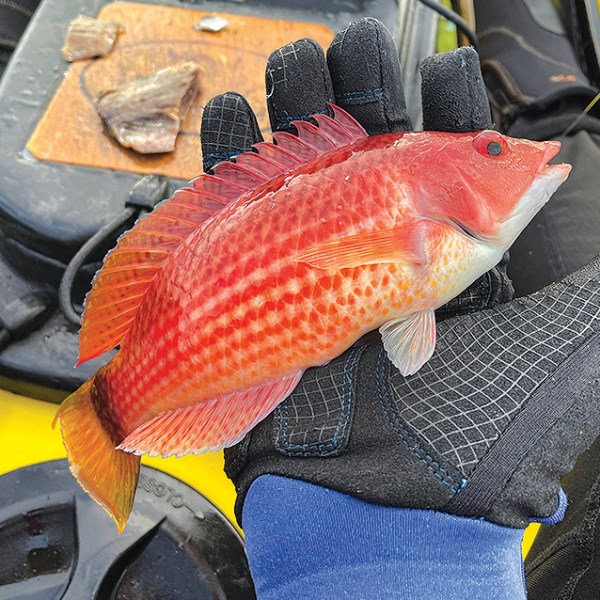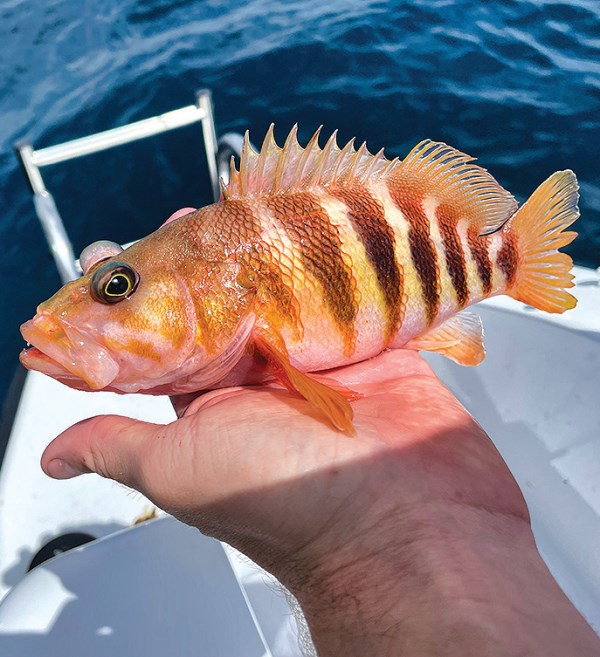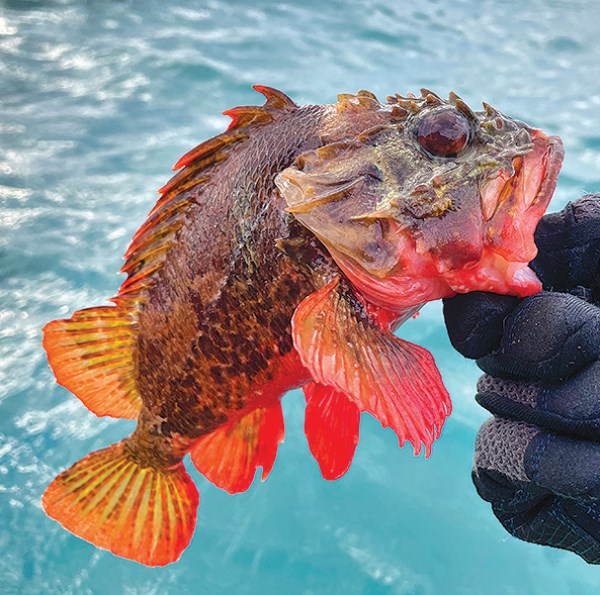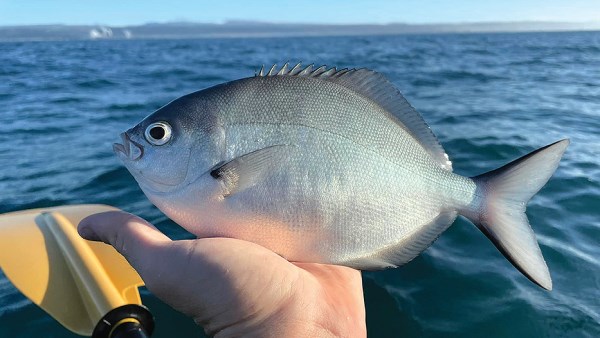
Over the past few years, I have caught many different species of fish and my favourite always seem to be the cool little fish I find on the top of shallow reefs. Here is a bit about a few of my seldom seen favourites.
Scarlet Wrasse
Scarlet wrasse are the main reef species you find milling about on the open reef in water deeper than 15 metres. As a part of the wrasse family, they have the same sharp teeth designed for crushing shellfish and sea urchins. They grow quite large after they change sex into males, reaching about 40cm. Scarlet wrasse, as their name suggests, have brilliant red colouration across their flanks. Yellow belly colouration crosses the red scales creating pineapple like markings. Add a black stripe on the tail and you have a cool looking fish!

Red Banded Perch
Red banded perch are actually part of the grouper family, even though they more resemble a sea perch. Over the past five years, I have managed to capture two of them. One in deep water off the coast of Waimarama Beach and another in just 10m on Pania Reef, out of Napier. They are much rarer than other reef species, as they prefer to sit in overhangs during the day. At dusk, like scorpionfish, they emerge to eat small crustaceans and fish. Despite their small size, they have rather large teeth, which would suggest they feed more on fish.

Dwarf
Scorpionfish
These small but venomous fish live in reef caves throughout the North Island. They are surprisingly common to catch when using small hooks to target tarakihi. They only grow to around 30 centimetres but are very good at shooting out of the reef to grab a bait that is floating past. Dwarf scorpionfish are most active at night, using their excellent camouflage to hunt small fish, crabs, and shrimps. They are my most favourite small reef species to look at, with their vivid orange and red colouration.

Sweep
In Hawkes Bay sweep are the main midwater plankton feeder and on clear days they can be seen in large schools scooping thousands of microscopic organisms into their mouths. Most people would have never caught one, as they need to be specifically targeted with a tiny fly hook, either baited or with a small piece of flasher material. I often capture them when fishing for live baits over deeper reefs and they make a welcome change to pulling up other species. Sweep are built broadly like a dinner plate and reach up to 35 centimetres, fighting strongly for their size. Surprisingly, sweep are a very long lived species that can live up to 50 years old!













